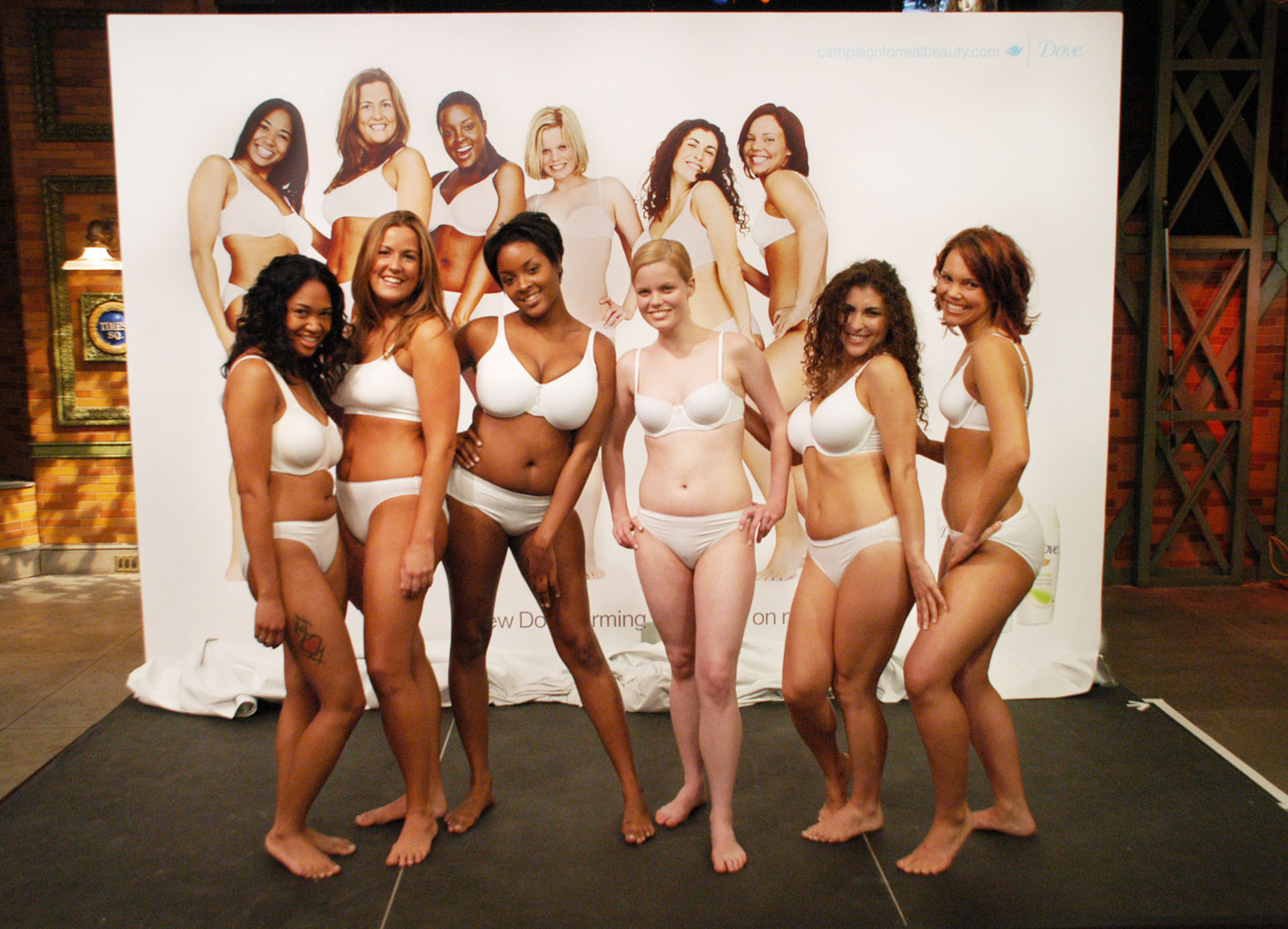
The Dove Campaign for Real Beauty is providing more exposure for realistic body types, getting kudos for advertising
FASHION As part of our ongoing 20th anniversary celebrations, in this special feature originally published in 2007, Summer Rayne Oakes discusses the fashion industry’s international effort to increase awareness about health and eating disorders, and the pressures of maintaining a healthy body image in the modelling industry
Catwalk photographs by Janet Liu
From issue 22 of Lucire
Summer Rayne Oakes is editor-at-large of Lucire.

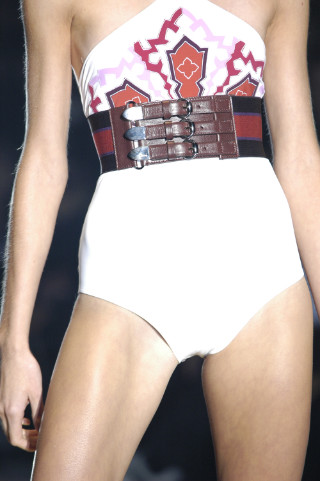 How thin is too thin? Above left: Ukrainian model Snejana Onopka, who had been sent home at some shows for being too skinny, at Oscar de la Renta, spring 2007. Above right: Gucci’s spring–summer 2007 catwalk took place before the BMI minima were instigated.
How thin is too thin? Above left: Ukrainian model Snejana Onopka, who had been sent home at some shows for being too skinny, at Oscar de la Renta, spring 2007. Above right: Gucci’s spring–summer 2007 catwalk took place before the BMI minima were instigated.
The fashion industry is an easy target when it comes to body weight issues. It has fallen under intense scrutiny for decades, and until recently, has done very little to shed its unhealthy stigma. In what seems to be a monumental step in the right direction, the international fashion community is backing up a move to implement the first steps to help safeguard against unhealthy body image.
This past September, Spain passed laws to ban girls that had a Body Mass Index (BMI) of less than 18. BMI is a number, derived by using height and weight measurements, to give a general indication if your weight falls within a healthy range. The use of Body Mass Index in this case banned 30 per cent of the models who participated in last season’s shows, according to a Reuter report.
Spain’s move created a health-conscious domino effect throughout the fashion industry. It became a much-discussed topic, particularly following the recent deaths of two models that suffered from anorexia. Twenty-two-year-old Luisel Ramos, from Uruguay, died on the runway this past August due to anorexia-induced heart failure. On February 13, 2007, her sister Eliana, another model, died of heart failure due to malnutrition. Also in 2006, Brazilian model Ana Carolina Reston, passed away from a general infection caused by the debilitating illness. Spain’s undertaking and Reston’s death spurred São Paulo’s Fashion Week to adopt similar guidelines. They added a rule to ban models under the age of 16 to a previous rule of presenting a medical certificate asserting models are healthy.
This past December, the Camera della Moda Nazionale, Italy’s Chamber of Fashion, went a step further by initiating the issuance of a licence. Models are required to be at least 16 years of age, have a BMI of at least 18·5, and will be assessed by the Chamber, a group of accredited people, including doctors, nutritionists, psychologists, and the Association of Fashion Services. ‘Ethnic and geographical factors’ will also be taken into account, says the mayor of Milano, Letizia Moratti.
France and the United States have been much more passive. With another fashion week in full swing, little movement (outside of discussion) is happening. France’s health ministry is setting up a working group. Anna Wintour, editor of Vogue, is motioning to set up a session in the United States. President of the Council of Fashion Designers, Diane von Furstenberg, championed the move for more guidelines. In a quote from the Los Angeles Times, von Furstenberg stated the importance that the American industry join the international dialogue: ‘We have an opportunity to help, and I think we have to seize that opportunity.’ With all the talk, however, very few movements were made to safeguard against extreme thinness. A janitor even claimed in one report about the stench of vomit backstage in the bathrooms at New York Fashion Week. ‘They’re doing a lot of vomiting,’ janitor Dennis White said to an AP reporter. ‘[The models] look too skinny … they’ve got to eat.’
The pressure to be thin: stories from fashion’s frontline
The pressure to be unreasonably thin is a reality. In fact, over the last two decades alone, the size 6 and 8 models that once graced the runway soon got whittled down to 4s, 2s, and 0s. ‘In 1991, I was a size 4–6, and was on the small side. When Kate Moss came on the scene in 1992, I was all of a sudden considered too big,’ remarked Kate Dillon, a highly successful model, now a size 10, who has graced a number of magazines and runways, and is the current face of Marina Rinaldi.
Since that time, strings of stilt-legged models and celebrities with sunken features have squeezed their way into magazines and runways, insidiously eating at our perceptions of health and beauty like a cancer. And even though the Kieras, Nicoles and Mary-Kates of the world have been crucified in front of a worldwide audience for their wars with weight, is it enough for us to challenge the status quo?
continued below
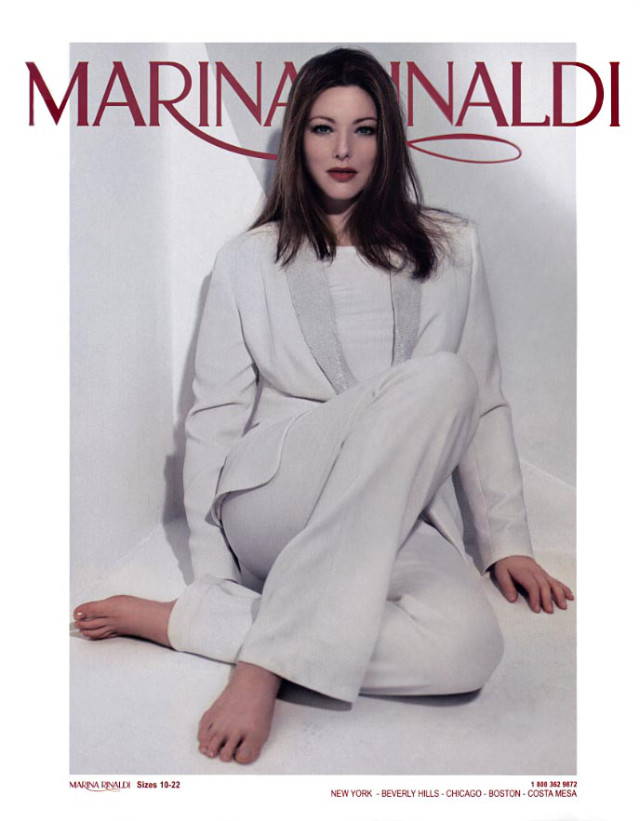

Kate Dillon, the face of Marina Rinaldi, is changing views of modelling.
Even though some of the girls we see in magazines naturally have a thin build, many do not, and most profess they have done whatever they can to mimic the standard. Former Sports Illustrated model Carré Otis severely compromised her health. In 2000, her doctors discovered three holes in her heart from 17 years of poor nutrition and substance abuse. At 30 years old, she had to undergo heart surgery. ‘I had been on this insane diet … to maintain the weight that was demanded of me when I was modelling,’ Otis confessed in an interview with Spotlight Health. ‘My diet was really starvation. I am not naturally that thin so I had to go through everything from using drugs to diet pills to laxatives to fasting. Those were my main ways of controlling my weight.’ Now at a size 12, Otis embraces her body’s normal weight, and is a spokesperson for the National Eating Disorders’ Association.
‘Industry standards have not changed yet,’ comments Dillon. ‘But they are certainly more flexible.’ As the first model over a size 8 to be featured in Vogue, Dillon says, ‘Fashion has a way to go before it could be called representative or inclusive. We should be increasing the kinds of bodies in the popular culture rather than further limiting them.’
Unfortunately, too many of us have grown silently accustomed to “the standard”. We’re so overly sensitized to the issue, that we’ve come to expect it. Those of us who are observers are constantly being barraged by a bevy of bean-poles as we flip mindlessly through television channels and glossy fashion magazines. Those of us, who are in the industry, dismiss it as part of the job.
My own experience can attest to the matter. I am a 6–8, not a size 0–4. If I were being put against the BMI tests given in places like Spain, Italy, or São Paulo, I would ring in at a 19·4 and have a healthy record, according to my family doctor. My agency, however, was very up front with me from the beginning: ‘Eighty per cent of the jobs will not be available to you,’ it was pointed out. The agent was referring to the fact that I was not an industry standard of 0–4, like the majority of the girls. His statement was slightly suggestive. The truth behind it was disconcerting, but I accepted it for what it was—the reality of the industry.
I never compromised my health, but I somehow am always made so aware of my choice to maintain my physique, as if it were a handicap that I lived with all my life. I recall a fitting at Nicole Miller where I tried to shimmy into a dress two sizes too small. The dress sat awkwardly against my body, as taut as a banjo string around my hips. It actually didn’t matter this time around. The man hiring wanted to work with me, so in the end, he made it work out. There were other times, however, that didn’t end up so wonderfully. I can recount a lingerie client who came up to me and remarked, ‘You look really good, but you need to lose some weight.’ Perhaps it was my “f*** you” look that spurred him to inch closer to me and tweak my side with his thick fingers. ‘If you can grab it, you can lose it,’ he said assuredly.
Accounts like that happen to girls more often than not. I have learned to shrug it off, though at times it is hard not to feel ostracized. Though I have grown inured to little criticisms after five years in the industry not conforming to “the standard”, it really is an uphill battle against a hard-to-crack status quo.
‘The thing about fashion, high fashion in particular,’ said Kate, ‘is that people take it very seriously. If a model shows up at a job and cannot fit into the clothes, it’s shameful. That is what was hardest for me. I was treated like a failure for not fitting into some clothes. I know some girls resorted to drug use. I was an exercise fanatic and smoker. I would go to the gym and couldn’t eat for like ten days. I saw an editor from Harper’s Bazaar and he told me I looked fabulous. I remember thinking, “Wow, that’s what I have to do to make it? It’s very sad.”’
Kate quit modelling after being a “skinny” model for three years. ‘I realized the industry was working hard to create an idealized illusion no one can live up to,’ she told Lucire. ‘So, not only was I harming myself to create this illusion, I was perpetuating it!’ As a model now (size 10), Kate says she has very little pressures and feels much more centred and healthy. ‘Nowadays, I just say forget it. I want to be myself, and my agency says, “Hey, no problem.”’
continued below
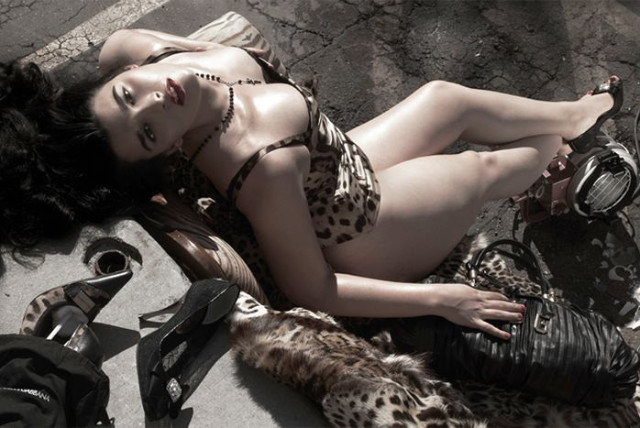
Crystal Renn of Ford Models models for Dolce & Gabbana.
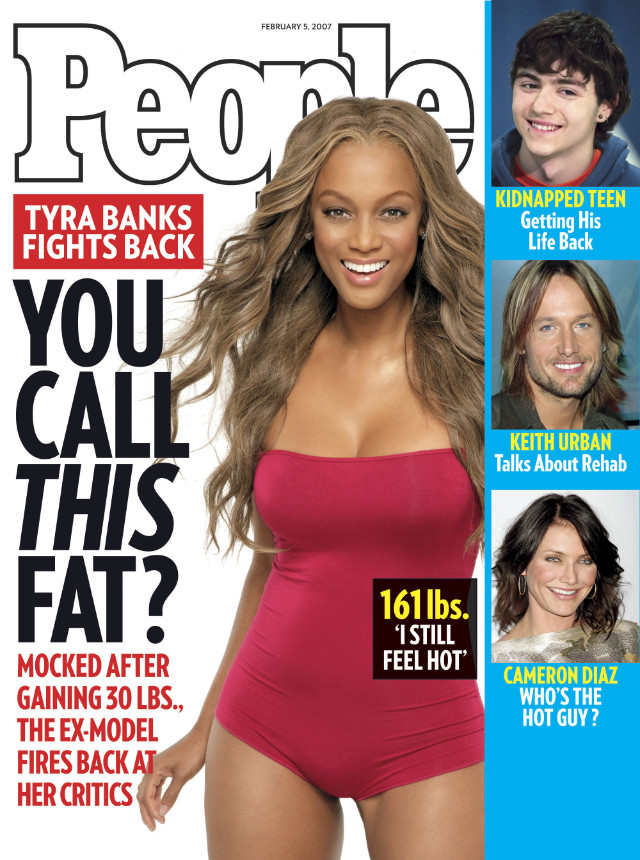
Tyra Banks, pictured on the cover of People on February 5, 2007, hit back at critics after putting on 30 lb. Banks is campaigning for realistic body types.
Many other models are beginning to join the ranks to help bring a healthier look to the industry. Tyra Banks has begun supporting diversity in look and size on both of her shows, America’s Next Top Model and The Tyra Banks Show. And still, more models are speaking out about eating disorders, the third most common chronic illness that plagues adolescent girls.
‘The real forward-thinkers seem to be less obsessed with the weight issue,’ remarks Dillon. ‘Really creative people seem to delight in a diversity of looks.’ It’s true, too. When Gaultier places a non-standard model on a runway or a fashion magazine does a spread with a voluptuous model, letters pour in with overwhelming praise and positive response. Even Dove’s Campaign for Real Beauty, showcasing six real women with six different body types, was lauded as a major step in the redefinition of health and beauty on the ad-campaign front. The Dolce & Gabbana ads of Crystal Renn (size 12–14) also showed major support from all sides of the industry.
It is moves like these that will help break down the unhealthy monoculture of mannequins on the fashion front. We need a greater push, however, from all members: advertisers, clients, designers, agents, bookers, models, media, and consumers. As more leaders lead, it will get easier for followers to follow. Though fashion can’t take all the blame for the eating disorders that plague the world, it does fall into the social–cultural factor that influences women and the way they view their body. It is a part of the problem, but it can also be a part of the solution. Von Furstenberg is right. If we have the chance to help, then we might as well. •
Related articles hand-picked by our editors
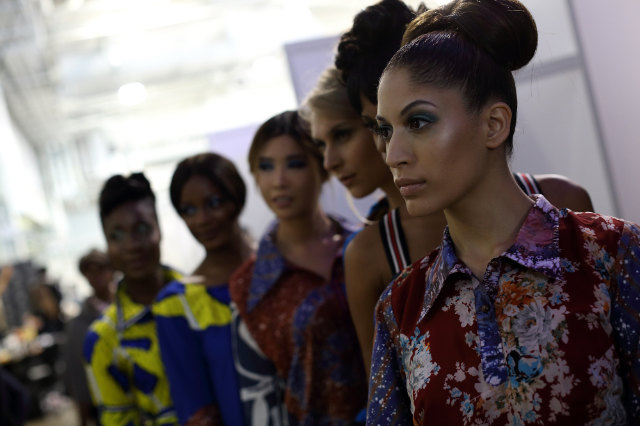
African fashion adds edge in London
With African fashion on the ascent, Bhavana Bhim checks out Africa Fashion Week in London behind-the-scenes
Photographed by Douglas Rimington/Detune Photography
 The two sides of Taika Waititi
The two sides of Taika Waititi
As we celebrate our 20th anniversary in 2017, we take a first look back in our archives. In July 2007, Sylvia Giles interviewed Taika Waititi, the then up-and-coming film director. These days, of course, Waititi has directing credits such as Boy, What We Do in the Shadows, Hunt for the Wilderpeople, and he’s making it big with Thor: Ragnorok. Ten years ago, as is often the case with Lucire, we sensed he’d be the next big thing—and the Taika Waititi that many of us know today can be seen presciently described in Giles’s words
Photographed by Emma Käthe Anderson
Hair and make-up by Vanilla
From issue 25 of Lucire
 Women must be at the forefront of climate change solutions
Women must be at the forefront of climate change solutions
Susi Newborn breaks down the issues relating to climate change, something which affects women far more than men, and issues a challenge as planet Earth must fight for its survival
Advertisement
Copyright ©1997–2022 by JY&A Media, part of Jack Yan & Associates. All rights reserved. JY&A terms and conditions and privacy policy apply to viewing this site. All prices in US dollars except where indicated. Contact us here.